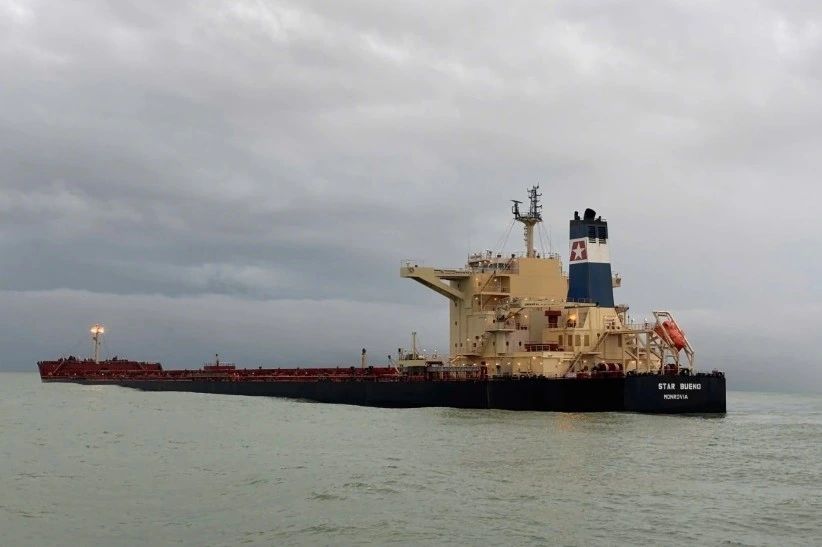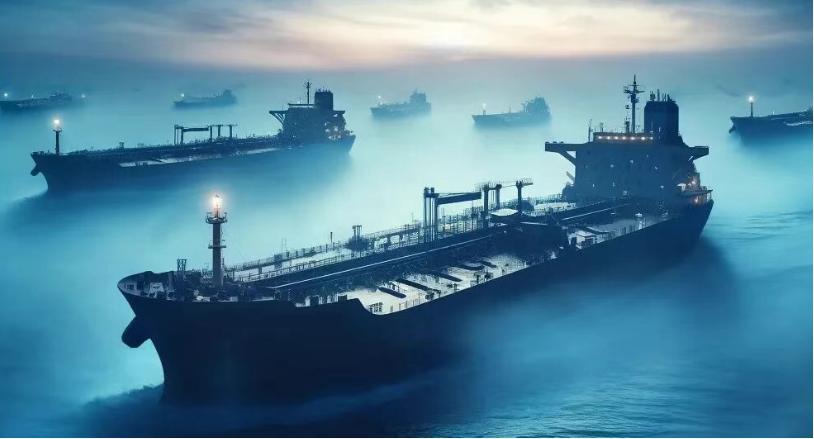
Source: Igor Grochev via Shutterstock
Dutch maritime tech firm Value Maritime and Singapore-based ship management company Eastern Pacific Shipping (EPS) announced they've completed the world's first CO2 liquid bunkering.
The operation took place in Rotterdam, the Netherlands, together with the Mon-Desir bunker barge, managed by EPS.
As a result of the successful launch, the vessel M/T Pacific Cobalt is now fully ready to capture CO2.
Just recently, the ship was equipped with Value Maritime's proprietary carbon capture system called Filtree, which, in turn, only a month ago received approval from the American Bureau of Shipping (ABS).
The Filtree system is designed to filter out sulfur and 99% of particulate matter from the flue gasses of seagoing vessels and includes a Carbon Capture & Storage (CCS) module that separates up to 40% of the CO2 emissions from the main and auxiliary engines and stores it in a battery container onboard the ship.
The carbon emissions are captured with the help of a special chemical, after which it can be stored in the onboard tank with a capacity of over 200 metric tons of carbon dioxide per voyage.
Once the tank reaches its full capacity, the chemical is pumped out on arrival at the destination port and is transported to end users like, for instance, synthetic fuel producers, who can utilize the CO2 to make valuable products.
Alternatively, the carbon dioxide can also be used in CO2 sequestration networks.
But once the CO2 is off the ship, the chemical used in the onboard carbon capture process can be returned back to the vessel and used to capture more carbon emissions during its next voyages.
According to Value Maritime, the first CO2 de-bunkering will take place in the next few weeks.
Source: Carbon Herald
Dutch maritime tech firm Value Maritime and Singapore-based ship management company Eastern Pacific Shipping (EPS) announced they've completed the world's first CO2 liquid bunkering.
The operation took place in Rotterdam, the Netherlands, together with the Mon-Desir bunker barge, managed by EPS.
As a result of the successful launch, the vessel M/T Pacific Cobalt is now fully ready to capture CO2.
Just recently, the ship was equipped with Value Maritime's proprietary carbon capture system called Filtree, which, in turn, only a month ago received approval from the American Bureau of Shipping (ABS).
The Filtree system is designed to filter out sulfur and 99% of particulate matter from the flue gasses of seagoing vessels and includes a Carbon Capture & Storage (CCS) module that separates up to 40% of the CO2 emissions from the main and auxiliary engines and stores it in a battery container onboard the ship.
The carbon emissions are captured with the help of a special chemical, after which it can be stored in the onboard tank with a capacity of over 200 metric tons of carbon dioxide per voyage.
Once the tank reaches its full capacity, the chemical is pumped out on arrival at the destination port and is transported to end users like, for instance, synthetic fuel producers, who can utilize the CO2 to make valuable products.
Alternatively, the carbon dioxide can also be used in CO2 sequestration networks.
But once the CO2 is off the ship, the chemical used in the onboard carbon capture process can be returned back to the vessel and used to capture more carbon emissions during its next voyages.
According to Value Maritime, the first CO2 de-bunkering will take place in the next few weeks.
Source: Carbon Herald
The opinions expressed herein are the author's and not necessarily those of The Xinde Marine News.
Please Contact Us at:






